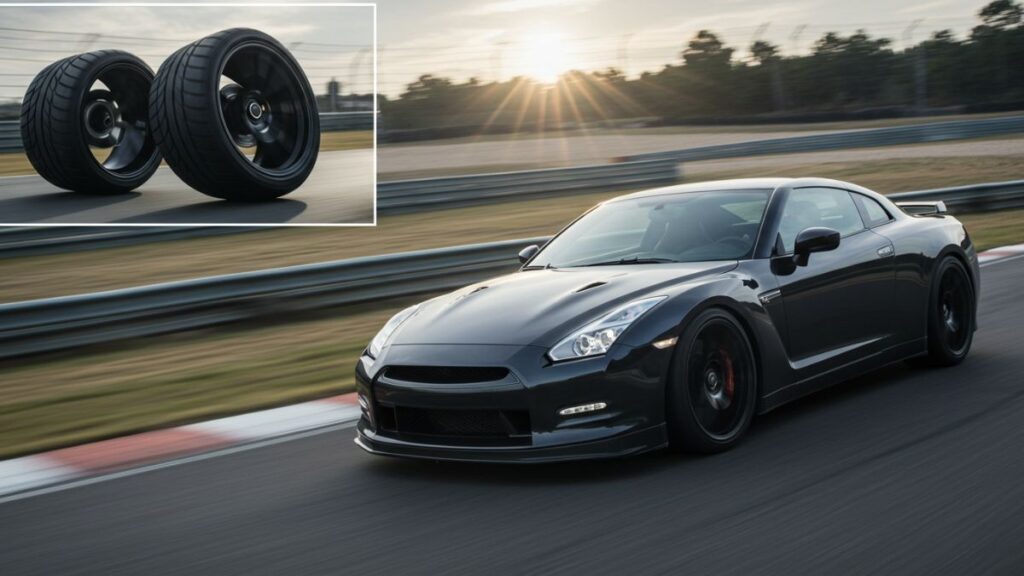Enter low profile tyres a sleek option that many automotive enthusiasts rave about. These tyres are designed with a shorter sidewall and wider tread, promising not just style but also improved handling dynamics on the road. If you’re curious about how these modern marvels stack up, join us as we dive into the performance advantages they offer, along with some important considerations before making the switch. Whether you’re looking to boost your ride’s aesthetics or its agility, understanding low profile tyress is essential for any driver seeking an edge in performance.
The Advantages of Low Profile Tyres
Low profile tyres offer a range of benefits that can enhance your driving experience. Their shorter sidewalls provide increased responsiveness, allowing for quicker steering reactions and an overall sportier feel.
These tyres improve cornering performance significantly. With more rubber in contact with the road, grip is enhanced during sharp turns. This leads to better stability at higher speeds, making them ideal for those who love spirited driving.
Aesthetically, low profile tyress give cars a sleek and modern look. They fill out wheel arches beautifully and often complement larger alloy wheels perfectly.
Additionally, lower profiles contribute to improved braking performance. The reduced flex of the tyre enhances stopping power under various conditions—an advantage you’ll appreciate on both dry and wet surfaces.
While they excel in many areas, it’s essential to weigh these advantages against potential downsides before making any changes.
Improved Handling and Stability
Low profile tyres are designed to enhance the driving experience significantly. Their shorter sidewalls provide a firmer connection between your vehicle and the road, leading to improved handling.
This design reduces flex during cornering, allowing for sharper turns without losing grip. Drivers often notice that their vehicles feel more responsive and agile when navigating curves or winding roads.
Stability is another key benefit. The wider contact patch of low profile tyress ensures better traction, especially on dry surfaces. This increased grip not only boosts performance but also enhances safety by reducing the likelihood of skidding.
Furthermore, these tyres can absorb less road noise, resulting in a smoother ride quality despite their sporty appearance. Enthusiasts appreciate this blend of comfort and control that comes from using low profile options on their cars.
Potential Drawbacks of Low Profile Tyres
While low profile tyres offer impressive performance benefits, they do come with some potential drawbacks.
One major concern is ride comfort. The lower sidewalls provide less cushioning, which can lead to a stiffer ride. This may be uncomfortable on bumpy or uneven surfaces.
Additionally, these tyres are more susceptible to damage from potholes and road debris. A sharp impact can result in a puncture or even a blowout.
Low profile tyres can also affect your vehicle’s fuel efficiency. They often generate higher rolling resistance, which may lead to increased fuel consumption over time.
The aesthetic appeal of low profile tyress might not suit everyone’s taste. Their sporty look often appeals to enthusiasts but might clash with more traditional designs for some drivers.
Factors to Consider Before Switching to Low Profile Tyres
Switching to low profile tyres can enhance your vehicle’s aesthetics and performance, but it requires careful thought. First, consider your driving habits. If you frequently navigate rough terrains or pothole-ridden roads, the decreased sidewall height may lead to a harsher ride.
Next, evaluate how these tyres affect fuel efficiency. Low profile tyres often have wider tread patterns that can increase grip but might also impact mileage negatively depending on your vehicle type.
Think about weather conditions in your area as well. Low profile tyress generally perform better on dry asphalt than in wet or icy conditions.
Assess the cost implications. These tyres can be pricier and may wear out faster than conventional options due to increased stress from sharp turns and high speeds. Balancing appearance with practicality is key when making this decision.
Conclusion:
Choosing low profile tyres can significantly alter your driving experience. Their design offers a blend of style and performance that many drivers crave.
However, it’s essential to weigh the pros against potential downsides. The right tyre choice depends on your driving habits and vehicle type.
If you seek enhanced grip during cornering or want a sportier aesthetic, these tyres may suit you well. But consider factors like ride comfort and road conditions too.
FAQ’S
What are low profile tyres?
Low profile tyres feature a shorter sidewall compared to standard tyres. This design allows for better handling but may reduce comfort on rough roads.
Do low profile tyres affect ride quality?
Yes, due to their stiffer sidewalls and reduced cushioning effect from the rubber, you might experience a firmer ride with low profile tyres.
Are there specific vehicles that benefit more from low profile tyres?
Sports cars and high-performance vehicles typically benefit more from low profile tyres because of their need for enhanced grip during sharp turns at higher speeds.


